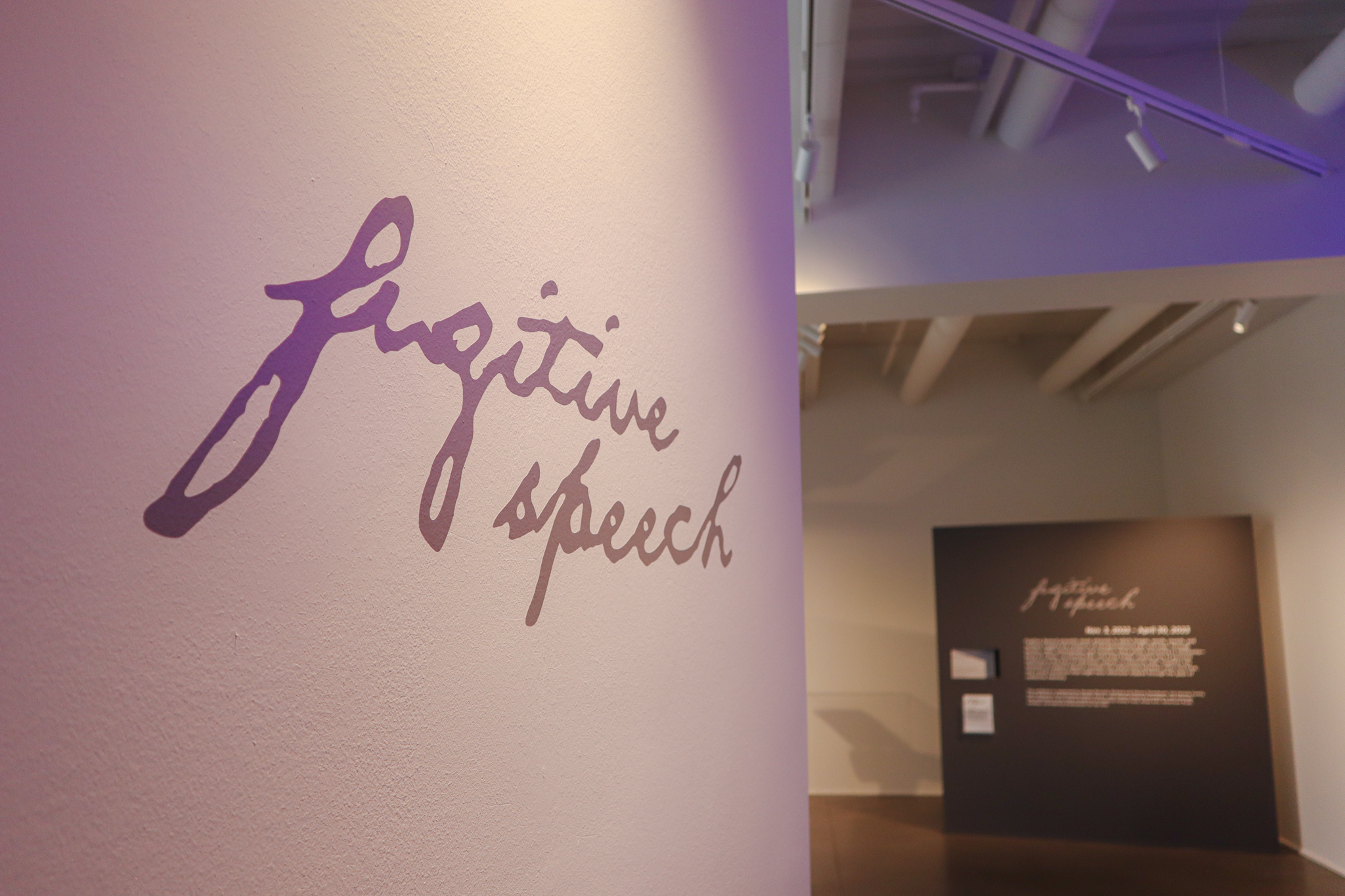
New exhibition highlights distinct perspectives and approaches
How can art tell stories? For Fugitive Speech, opening in the Mary LeFlore Clements Oklahoma Gallery on Nov. 3, the answer is multifaceted. Artists Emily M. Chase, JJJJJerome Ellis and Anita Fields explore acts of personal testimony in the face of sociocultural and historical odds, using textiles, video, photography and ceramics to convey their narratives.

“The Central Plains region is home to diverse communities, each with an inheritance of memories that endures due to individual or collective efforts at recognition,” says Associate Curator Pablo Barrera. “This exhibition is an opportunity to reflect on the ways in which artistic communities, especially within Oklahoma, embrace the intersection of craft, visual and literary arts in order to celebrate unsung voices past and present.”
Exploring the relationships between voice, memory and time, Fugitive Speech seeks asks several questions: How do these visual languages cohere? How do they disappear? How do collective history and personal memory overlap? How do we convey stories of pain and hope?

JJJJJerome Ellis isn’t new to our third floor: In OKC Rep’s Piano Tales, which ran in the Te Ata Theater this spring, the artist spun tunes and tales off the cuff with a participatory audience. Through music, literature, performance and video, Ellis explores the interconnectedness among Blackness, disabled speech, divinity and nature, and sound and time. Drawing from personal and historical experience, Ellis’ Fugitive Speech video, Impediment is Information, contemplates ancestral movements across the Plains. Featuring erasure poems comprised of historical documents relating to enslaved Black people, specifically said to have a speech impediment like his own, the video overlays words with an original score and footage of the artist conducting ceremonies honoring his “ancestors.” Ellis’ piece bridges the past with a potential future of untethered existence, a chance at self-liberation.

Indigenous artist Anita Fields pays homage to her ancestors, too. Fields’ works reflect on the complexities of cultural influence and concepts in early Osage philosophy, specifically the distortion of Indigenous histories. In Fugitive Speech, Fields’ ceramic and fiber pieces highlight significant symbols and patterns passed down across generations. They emphasize distorted written accounts, charging the works with Indigenous histories of transmitting and losing knowledge, language and culture. These sometimes-indecipherable narratives illustrate a central theme among the exhibition, one of sharing and remembering generational hope and pain.
Artist Emily M. Chase records history, particularly through memory and relationships to craft. Her works typically combine dyed, cut and stitched paper or fiber with light to illuminate scenes that focus on personal relationships. Chase’s Fugitive Speech pieces speak to the concept and experience of memory (or lack thereof). She highlights disembodied moments as seen through a forgetting calendar, detailing the relationship between her grandmother’s dementia and Chase’s own post-surgery amnesia. The fiber art’s delicacy acts as both a physical and metaphorical reference to the fragile tangibility of it all, specifically language. Focusing on both the mental and physical, Chase’s pieces evoke injury or cognitive loss, a reminder of how easily these things seem to slip through the cracks.

“The artists in Fugitive Speech create works that bear witness to realities that may be missing from our shared understanding and experiences,” Barrera says.
Fugitive Speech will open with a reception and artist talk between Barrera, Ellis and Fields. Join us for an evening of community, intergenerational histories and a conversation exploring stories that slip through the gaps of collective and personal memory. All are welcome at this free opening event.
Images:
Installation view of Fugitive Speech.
JJJJJerome Ellis, Impediment is Information, 2021. Single-channel video with sound. 14 minutes. Courtesy the artist.
Anita Fields, Resisting the Flow 1-4, 2021. Clay, gold luster glaze, slips and mixed-media collage.
Emily M. Chase, Forgetting Calendar, 2020. Twelve digitally printed silk organza squares, glass head pins and a fragment of conversation.
Return to New Light.









